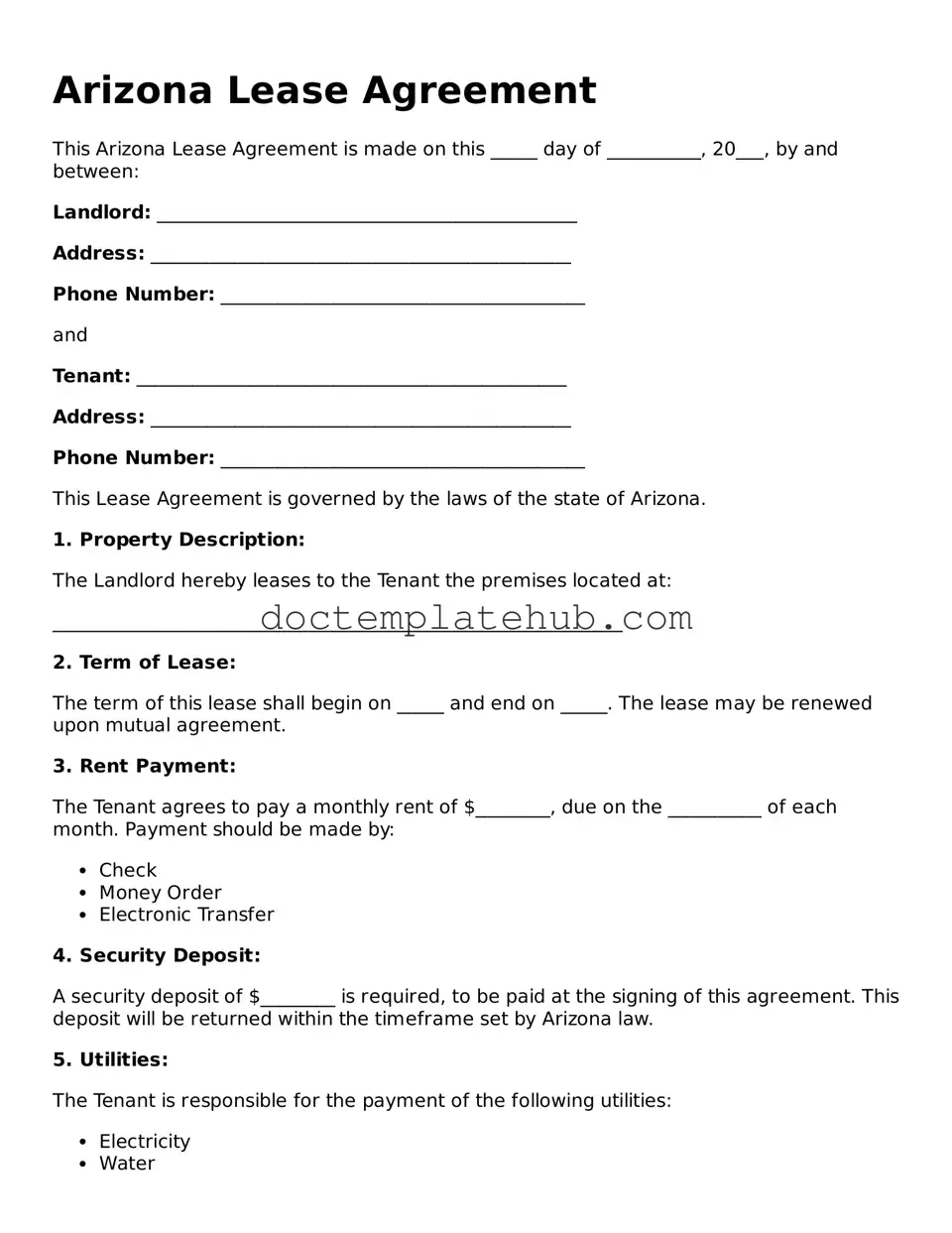What is an Arizona Lease Agreement form?
An Arizona Lease Agreement form is a legal document that outlines the terms and conditions under which a landlord rents out property to a tenant. This form includes essential details such as the rental amount, payment due dates, duration of the lease, and responsibilities of both parties. It serves to protect the rights of both landlords and tenants by clearly defining expectations and obligations.
What should be included in an Arizona Lease Agreement?
When creating an Arizona Lease Agreement, several key elements should be included to ensure clarity and compliance with state laws. These elements typically encompass the names of the landlord and tenant, the property address, the lease term (fixed or month-to-month), the amount of rent, and the security deposit details. Additionally, it’s important to outline rules regarding maintenance, pets, and any restrictions on property use. Including a section on termination and renewal procedures can also be beneficial for both parties.
How long is an Arizona Lease Agreement valid?
The duration of an Arizona Lease Agreement can vary based on the terms agreed upon by the landlord and tenant. Most commonly, leases are structured for a fixed term, such as one year. However, month-to-month leases are also popular, allowing for greater flexibility. It’s crucial to specify the lease duration in the agreement to avoid any misunderstandings. After the lease term ends, tenants may have the option to renew or the lease may automatically convert to a month-to-month agreement, depending on the original terms.
What happens if a tenant wants to break the lease early?
If a tenant needs to break the lease early, it’s essential to review the terms outlined in the Arizona Lease Agreement. Many agreements include a clause detailing the process for early termination, which may involve providing written notice and paying a fee. In some cases, tenants may be able to negotiate with the landlord to find a suitable solution, such as subletting the property or finding a replacement tenant. Understanding these options can help mitigate potential penalties and ensure a smoother transition.
